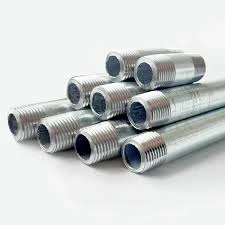-
Cangzhou Yulong Steel Co., Ltd.
-
Phone:
+86 13303177267 -
Email:
admin@ylsteelfittings.com
- English
- Arabic
- Italian
- Spanish
- Portuguese
- German
- kazakh
- Persian
- Greek
- French
- Russian
- Polish
- Thai
- Indonesian
- Vietnamese
- Zulu
- Korean
- Uzbek
- Hindi
- Serbian
- Malay
- Ukrainian
- Gujarati
- Haitian Creole
- hausa
- hawaiian
- Hebrew
- Miao
- Hungarian
- Icelandic
- igbo
- irish
- Japanese
- Javanese
- Kannada
- Khmer
- Rwandese
- Afrikaans
- Albanian
- Amharic
- Armenian
- Azerbaijani
- Basque
- Belarusian
- Bengali
- Bosnian
- Bulgarian
- Catalan
- Cebuano
- China
- China (Taiwan)
- Corsican
- Croatian
- Czech
- Danish
- Esperanto
- Estonian
- Finnish
- Frisian
- Galician
- Georgian
- Kurdish
- Kyrgyz
- Lao
- Latin
- Latvian
- Lithuanian
- Luxembourgish
- Macedonian
- Malgashi
- Malayalam
- Maltese
- Maori
- Marathi
- Mongolian
- Myanmar
- Nepali
- Norwegian
- Norwegian
- Occitan
- Pashto
- Dutch
- Punjabi
- Romanian
- Samoan
- Scottish Gaelic
- Sesotho
- Shona
- Sindhi
- Sinhala
- Slovak
- Slovenian
- Somali
- Sundanese
- Swahili
- Swedish
- Tagalog
- Tajik
- Tamil
- Tatar
- Telugu
- Turkish
- Turkmen
- Urdu
- Uighur
- Welsh
- Bantu
- Yiddish
- Yoruba

Dec . 12, 2024 10:51 Back to list
stainless plate flanges
Stainless Steel Plate Flanges An In-Depth Exploration
Stainless steel plate flanges are crucial components in various industrial applications, providing a robust means of connecting pipes, valves, pumps, and other equipment in a piping system. Their unique properties and versatility make them an essential choice for a wide range of environments, from chemical processing plants to water treatment facilities. In this article, we will explore the significance, types, advantages, and considerations related to stainless steel plate flanges.
What Are Stainless Steel Plate Flanges?
Stainless steel plate flanges are flat pieces of stainless steel with a hole in the center for a pipe and bolt holes along the perimeter. They serve as a connection point, allowing for the easy assembly and disassembly of piping components. The flange is typically welded to the pipe and provides a smooth surface for the connection to another part of the system. Plate flanges can be used in high-pressure applications and are essential in maintaining the integrity of a piping system.
Types of Stainless Steel Plate Flanges
There are various types of stainless steel plate flanges designed to cater to different application requirements. Some common types include
1. Blind Flanges These flanges do not have a hole in the center, allowing for the sealing of a piping system at the end of a pipeline. 2. Slip-on Flanges These flanges are slipped over the end of the pipe before welding. They are easy to align and are often used in lower-pressure applications. 3. Weld Neck Flanges With a long tapered hub, weld neck flanges are designed to be welded to the pipe, providing excellent strength and a smooth transition.
4. Socket Weld Flanges These flanges are used for small-diameter pipes and consist of a socket where the pipe is inserted before welding.
5. Threaded Flanges Also known as screw flanges, these feature internal threads to allow for direct connection to a threaded pipe.
Advantages of Stainless Steel Plate Flanges
Stainless steel plate flanges offer several advantages that make them the preferred choice in many industrial settings
- Corrosion Resistance One of the most significant benefits of stainless steel is its resistance to rust and corrosion, making it ideal for applications in harsh environments, including chemical processing and marine applications
.stainless plate flanges

- Strength and Durability Stainless steel is known for its high tensile strength and durability, allowing flanges to withstand high pressures and temperatures without deforming or failing.
- Versatility These flanges can be used in various industries, including oil and gas, water treatment, food processing, and pharmaceuticals, highlighting their versatility.
- Ease of Maintenance Stainless steel flanges can be easily cleaned and maintained, ensuring long-term reliability and reduced downtime.
Considerations When Choosing Stainless Steel Plate Flanges
When selecting stainless steel plate flanges for a specific application, several factors must be taken into account
- Material Grade The grade of stainless steel used in manufacturing the flange can impact its performance. Common grades include 304 and 316 stainless steel. The choice should be based on the environmental conditions and the specific application.
- Size and Pressure Rating It is essential to choose flanges that fit the pipe dimensions and can withstand the required pressure. Standards such as ANSI, ASME, and DIN provide guidance for sizing and rating.
- Type of Connection Depending on the application, the type of flange connection—be it welded, threaded, or bolted—should be chosen carefully to ensure compatibility with the existing piping system.
- Regulatory Compliance Certain industries may have specific regulations and standards that flanges must meet. It's important to be aware of and comply with these requirements to ensure safety and efficiency.
Conclusion
Stainless steel plate flanges play a vital role in the connectivity and integrity of piping systems across various industries. Their corrosion resistance, durability, and versatility make them an ideal choice for challenging environments. By understanding the different types, advantages, and key considerations involved in selecting these flanges, engineers and procurement professionals can make informed decisions that enhance the efficiency and reliability of their applications. As industries continue to evolve, the demand for high-quality stainless steel plate flanges will undoubtedly remain strong, underscoring their significance in modern engineering practices.
Latest news
-
ANSI 150P SS304 SO FLANGE
NewsFeb.14,2025
-
ASTM A333GR6 STEEL PIPE
NewsJan.20,2025
-
ANSI B16.5 WELDING NECK FLANGE
NewsJan.15,2026
-
ANSI B16.5 SLIP-ON FLANGE
NewsApr.19,2024
-
SABS 1123 FLANGE
NewsJan.15,2025
-
DIN86044 PLATE FLANGE
NewsApr.19,2024
-
DIN2527 BLIND FLANGE
NewsApr.12,2024
-
JIS B2311 Butt-Welding Fittings LR/SR 45°/90° /180°Seamless/Weld
NewsApr.23,2024











